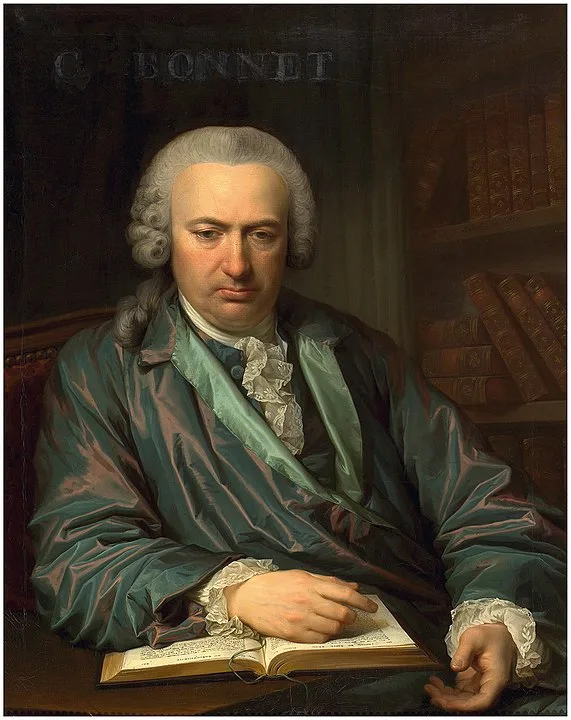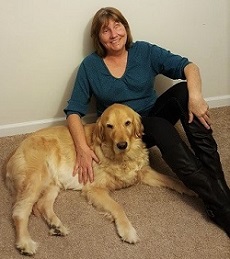Charles Bonnet Syndrome: Why Am I Having Visual Hallucinations?

Many vision professionals believe that a significant number of adults with various eye conditions, including macular degeneration, diabetic retinopathy, and glaucoma, experience Charles Bonnet (“Bo-NAY”) Syndrome, a condition that causes vivid, complex, recurring visual hallucinations, usually (but not only) in older adults with later-life vision loss.
By some estimates, as many as 20-30% of adults with low vision are affected by CBS, although actual numbers are difficult to determine, since few people who experience the symptoms are likely to discuss them with family members, friends, or physicians.
To better understand this reluctance, learning the basics about Charles Bonnet Syndrome (CBS), including its causes, symptoms, and experimental treatments and therapies that have shown promise in treating CBS is helpful.
Who Was Charles Bonnet?
Charles Bonnet (March 13, 1720 – May 20, 1793) was a Swiss naturalist and philosopher and the first person to describe the syndrome.
Initially, he observed symptoms of the syndrome in his 87-year-old grandfather, who was nearly blind from cataracts, yet still “saw” men, women, birds, carriages, buildings, scaffolding, and tapestries before his eyes.
In 1760, Bonnet described his eponymous syndrome, in which he documented a range of complex visual hallucinations in seemingly psychologically intact people.
Charles Bonnet Syndrome: Visual Hallucinations Are My Constant Companions

VisionAware Peer Advisor Sheila Rousey is an educator, assistive technology specialist, and certified braille transcriber. She also has Marfan syndrome, a congenital connective tissue disorder that can manifest itself in the body in many ways. In Sheila’s case, she was born with cataracts and microphthalmia [i.e., smaller eyes and eye sockets]. After surgery to remove her cataracts, Sheila developed glaucoma and – later on – retinal detachments.
For the past three years Sheila has experienced Charles Bonnet Syndrome (CBS), a condition that causes vivid, complex, recurrent visual hallucinations, usually (but not exclusively) in adults and older adults with later-life vision loss. Says Sheila, “I am really pleased that the subject of CBS is finding its way into the conversation. Hopefully, the medical community will take a more serious look at the findings and low vision people will no longer only learn of it as a result of shared experiences through support groups.”
Learn more about the many ways that VisionAware can help you or your family member cope with vision loss:
- Learn more about the wide range of support groups.
- Check out our Getting Started Kit for more ideas to help you live well with low vision.
- Sign up with VisionAware to receive free weekly email alerts for more helpful information and tips for everyday living with blindness or low vision.
What Is Charles Bonnet Syndrome?
Charles Bonnet Syndrome (CBS) is a condition that causes vivid, complex, recurring visual hallucinations, usually (but not only) in older adults with later-life vision loss. It was introduced into the English-speaking psychiatric literature in 1982.
The “visual hallucinations” associated with CBS can range from animated, colorful, dreamlike images to less complex visions of people, animals, vehicles, houses, and similar everyday images.
Lighthouse International (now Lighthouse Guild) provides a helpful illustration and definition of CBS “visions,” including an important distinction between CBS visions/illusions and delusions:
“[Individuals] who perceive these visions know they’re—mirages, of sorts. That is, the images are illusions, not delusions. The difference is that a person with delusions is convinced that what s/he sees is real. [People] with Charles Bonnet Syndrome may initially second-guess themselves but ultimately accept that their perceptions have no substance.”
In other words, adults with CBS are usually in good mental health and come to understand that these illusions or “hallucinations” are not sensate or “real.” In addition, the illusions associated with CBS are solely visual and do not occur in conjunction with the other senses (hearing, smell, taste, or touch).
What Causes Charles Bonnet Syndrome?
 An image of a blue moose reflected in a window
An image of a blue moose reflected in a window
CBS is sometimes referred to as “phantom vision” syndrome and can be compared to “phantom limb” syndrome, in which an individual can continue to receive sensation—and even pain signals—from a limb that has been amputated.
Similarly, in CBS, when retinal cells no longer receive and relay visual images to the brain due to eye disease or damage to the optic pathways, the visual system begins creating its own “phantom” images (such as this image of a blue moose reflected in the window at left).
In a National Public Radio story about CBS, ophthalmologist Jonathan Trobe, M.D., from the University of Michigan, explained it this way:
The brain is a mash-up of stored visual memories. When visual cells in the brain stop getting information, which happens when your rods and cones stop working, the cells compensate. If there’s no data coming in, they ‘make up’ images.
Lighthouse International (now Lighthouse Guild) also explains the “phantom vision” associated with CBS:
The cause of this disorder is thought to be a misfire in the brain similar to the neurological mixup that occurs in patients with phantom limb syndrome. As vision wanes, the brain continues to interpret visual imagery in the absence of corresponding visual input, just as it sometimes continues to process pain signals from a limb that’s no longer there.
Experimental Treatments, Therapies, and Research in The Netherlands
Bartiméus and Royal Dutch Visio, agencies that work with blind and low vision persons in the Netherlands, have developed several treatments for people with CBS.
A primary intervention has been the development of CBS peer support groups, which provide information about CBS; instruction in relaxation techniques to better cope with images/hallucinations; ongoing emotional support; and a forum for sharing experiences that can help decrease social isolation.
Input from the CBS peer support groups has been instrumental in developing the following techniques to lessen or manage images and hallucinations:
- closing the eyes and then opening them
- moving the eyes in rapid back-and-forth and up-and-down movements
- looking away, or walking away, from the images or hallucinations
- staring at, or fixating on, the images
- turning on a light
- concentrating on something else/looking for a distraction
- approaching and/or hitting at the image or hallucination
- shouting at the image or hallucination
More Interventions for Charles Bonnet Syndrome
Charles Bonnet Syndrome is a “diagnosis of exclusion,” which means the diagnosis can be made if there is no other neurological diagnosis to explain the hallucinations. If there are additional neurological problems or symptoms such as memory loss, weakness, or tremor, a patient should be referred to a neurologist to rule out other conditions contributing to the hallucinations.
The Royal National Institute of Blind People (RNIB) in the United Kingdom provides several helpful suggestions to help with CBS visions and hallucinations:
Sometimes just standing up or moving slightly can help to get rid of the hallucinations. Some people also find that looking directly at the image they are seeing causes it to fade. Sometimes moving your eyes or blinking rapidly can also help.
When a hallucination starts, look from left to right, about once every second for 15 to 30 seconds, without moving your head. Your eyes should be held open during the movements. If the hallucination continues, have a rest for a few seconds and try another 15 to 30 seconds of looking left and right.
If the hallucinations have not diminished or stopped after four or five periods of looking left and right for 15 to 30 seconds, the exercise is unlikely to work and you can stop. It may be worth trying again on another occasion or for a different type of hallucination.
The level of lighting may influence your hallucinations. If your hallucinations happen in dim light, try opening the curtains or turn on a light or the television, as the change in lighting may help to stop the hallucinations. If your CBS happens when there’s a lot of light, then switching off a light may also help.
According to Lighthouse International,
After a year or perhaps 18 months, the brain seems to adjust to the person’s declining vision, and the hallucinations begin to recede. Roughly one third of patients with low vision develop Charles Bonnet syndrome, including those with age-related macular degeneration, cataracts, diabetic retinopathy, and other eye disorders.
The hallucinations are more likely to occur when the person is awake, alone, and in dim light, or when he or she is physically inactive or lacks distractions, such as television.
Sometimes consultation with a neurologist or other specialist is necessary to rule out any serious disorders that may mimic Charles Bonnet syndrome [such as migraine, epilepsy, brain tumors, dementia, Parkinson’s disease, or mental illness, for example]. For most patients, however, just knowing that they aren’t becoming mentally ill and that the symptoms will eventually subside is all the treatment they need.
By Maureen A. Duffy, M.S., CVRT